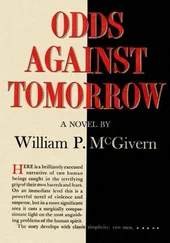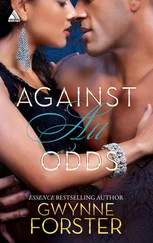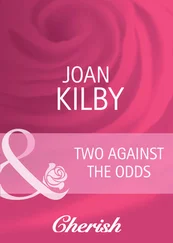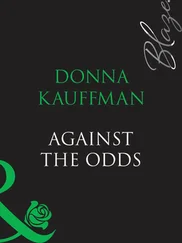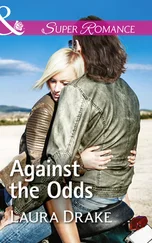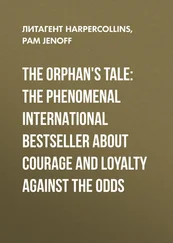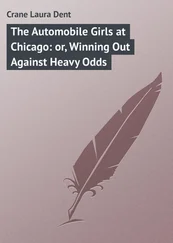The camera cut to images of children playing on the beach at Sandy Hook, New Jersey. They were running around in the pouring rain with their arms held aloft like wings.
“Well, Vivian, it’s not that simple. Given the duration of the drought, the intensity of this storm is troubling. As is the prospect of Tammy making landfall as soon as tomorrow evening, by which point it will likely achieve hurricane strength. The erosion of the beaches in the metropolitan East Coast region has accelerated dramatically in the last several months. The coastal wetlands have been decimated, not to mention—” He paused, glancing offscreen. “Is that — is that a live image? Those children should get off that beach. No one should be allowed on the beach!”
The camera abruptly cut away from him and back to the image of the children playing.
“Dr. Walsh, with all due respect to your expertise, do you actually mean to suggest that rain is a bad thing?”
“Rain in and of itself is not a bad thing. But all the analytics indicate that this storm is going to bring excessive rain. The drought has inhibited the land’s ability to accommodate sudden large amounts of precipitation. The soil simply cannot absorb it. Especially at this stage in the tidal cycle, when we’re two days short of a full moon—”
“Dr. Walsh? Thank you for your time. We’re going to have to cut away—”
“Please, Vivian? You need to inform the public that they must retreat from the coasts—”
“We’re going live now to Central Park, where an improbable display of jubilation has broken out on the Great Lawn. You just gotta see this — it’s the kind of thing that makes me proud to be a New Yorker. Actually — Harry? You want to take over? I might just run down there myself—”
Mitchell flipped off the television and raced back to the conference room, where his drought files were arrayed across the table: historical weather tables, local news articles, reports from the USDA, the USGS, NOAA, books with titles such as The Worst Hard Time, The Drought , and The End of Nature . This Walsh was right, at least about the soil. During the drought the region’s topsoil had dried out and turned to dust. Just the previous week, farmers in New Jersey had seen large, glowing towers of cloud passing over their farms — what one man interviewed on the nightly newscast had described as a “black blizzard.” The dust sprayed houses and seeped through the thinnest cracks in the walls, around the windows and under doors. “The grit gets into every crevice, even into a man’s soul, if I may say so,” said a Newark contractor. One of the tabloids profiled a woman in Morris County who woke up to find that overnight, a fine layer of dust had invaded her house, settling on every surface, including her china, the rugs, and her sheets. When she rose from bed, the only clean part of her pillow was the outline of her head.
In New York there was a run on window washers. The waiting list was three weeks, and that was only if you could afford the jacked-up rates — Charnoble had paid one guy four hundred dollars an hour. When you were on the street, you saw them every time you looked up; they dangled from their nets like tree caterpillars. Mitchell could have used one himself: brown plumes of sediment had appeared like mold on his own apartment window, blotting out the meager view he had. On the street level the problem was compounded by the automobiles’ trapped exhaust, which was too heavy to rise, especially in the absence of breeze. The pillars of buildings were ribbed with soot; you couldn’t lean against a street corner without ruining your shirt. For months the earth had been drying out and flaking away. The land had been starved to death, abused, murdered.
He realized that, having dedicated his research to extreme drought scenarios, he’d suffered a failure of the imagination. He hadn’t considered what might happen in the case of a deluge.
There were precedents, he quickly discovered. Most recently the 2011 Queensland floods, which drowned nearly a quarter of Australia, had followed a decade of drought. He tried to run down what he knew about extreme rainfall in New York City. He recalled, for instance, that lower Manhattan began to flood when the sea level rose five feet above average levels. On December 11, 1992, a nor’easter caused a surge of eight and a half feet. The storm closed the PATH and subway systems. An L train reversed course under the East River when the Fourteenth Street tunnel began to fill with water. Three hundred passengers had to evacuate a G train and walk a thousand feet out of a flooded Greenpoint tunnel. The FDR Drive was submerged. The major bridges all closed down.
In late October 2012, Hurricane Sandy, though only a Category 1, brought a near fourteen-foot tide to Battery Park, flooded sections of lower Manhattan, and left 850,000 people without electricity. Staten Island and south Queens suffered the greatest damage; the Rockaway Beach boardwalk was stripped to its piers. The New York Stock Exchange closed for two consecutive days for the first time since 1888, schools shut down for a week, and it was more than two weeks before subway service was fully restored. The lessons of Sandy were soon forgotten, however, even though conditions continued to deteriorate in the years following the storm.
Mitchell pulled the numbers. It didn’t take long to isolate the bad news. With depleted salt marshes, narrower beaches, eroded soil, and a higher water table — the East River and the Hudson had each risen eight inches in the past twenty years — the city had never been more susceptible to flooding. They were close to a full moon, which meant high tides: water two feet higher than the mean. A storm surge would raise the water level of the New York Bight, which would overflow into the rivers. The question was how large a surge there would be. Under extreme drought conditions, could a regular storm cause flooding?
Mitchell was verifying erosion figures with the city’s Department of Environmental Protection office when Jane returned. She had pulled her hair back in a ponytail to keep the water from dripping down her face. She carried a single shoe, the other one having been lost somewhere in the park. Her makeup had washed away, and her eyes were dewy and soft.
“You missed a lot of fun.” Her bra, pale blue and webbed, was visible beneath her wet cream blouse. “Have you seriously been working all this time?”
“A little. I think we should review our flood scenarios.”
“A flood?” She gave him a sideways look. “Are you kidding?”
“Droughts often lead to floods. I’m trying to figure the odds.”
Charnoble appeared at the doorway.
“They’re calling,” he said, grinding his forefinger into his palm. “They’re call ing. They want meetings. And meetings mean more money. Money, money, money—” An obscene grin, like a water stain, crept across his face.
4.
The newspapers led with photographs of ecstatic New Yorkers. Under the headline SINGING AND DANCING IN THE RAIN, the cover of one tabloid ran a picture of the casts of Broadway musicals dancing outside in Times Square, arm in arm in avenue-wide chorus lines. The markets had advanced nearly six percentage points, led by a massive surge in the agribusiness sector. Traders were photographed on the steps of the New York Stock Exchange, spinning in the rain, pinwheeling their arms, their ties plastered to their shoulders.
He’d slept terribly. Wasn’t rain supposed to lull you to sleep? Insomniacs paid for the privilege: there were machines, little speakers, that projected incessant pitter-patter all night. But what he heard outside his window was violent, erratic, a wild drunkard careening through the streets with sledgehammers in his hands. The rain continued all night. It wasn’t cleansing, at least no more than a blitzkrieg could be considered cleansing. It was obliterative. It wiped the sludge right off his window. He was only surprised that it didn’t wipe the windows right off his building.
Читать дальше



